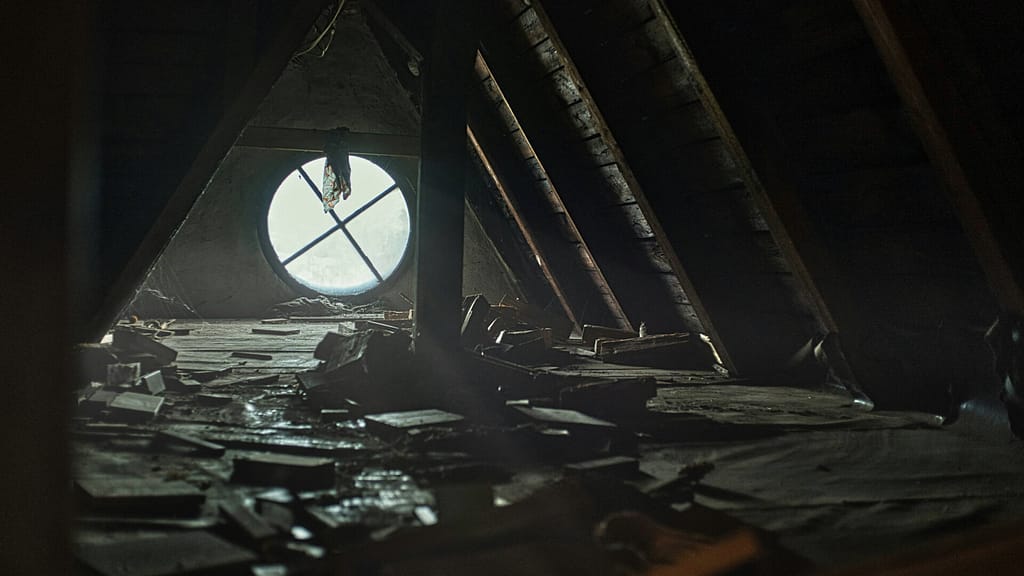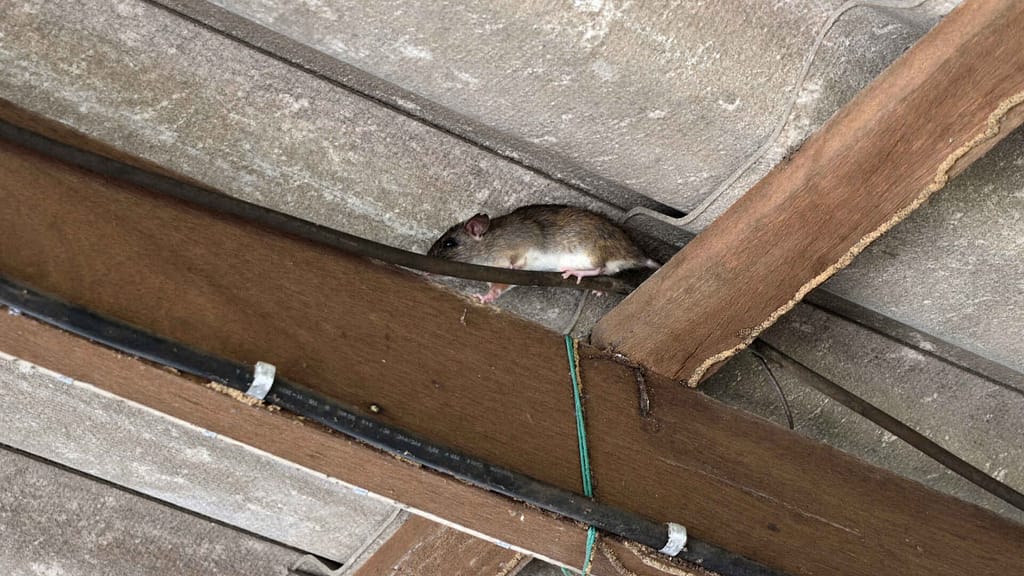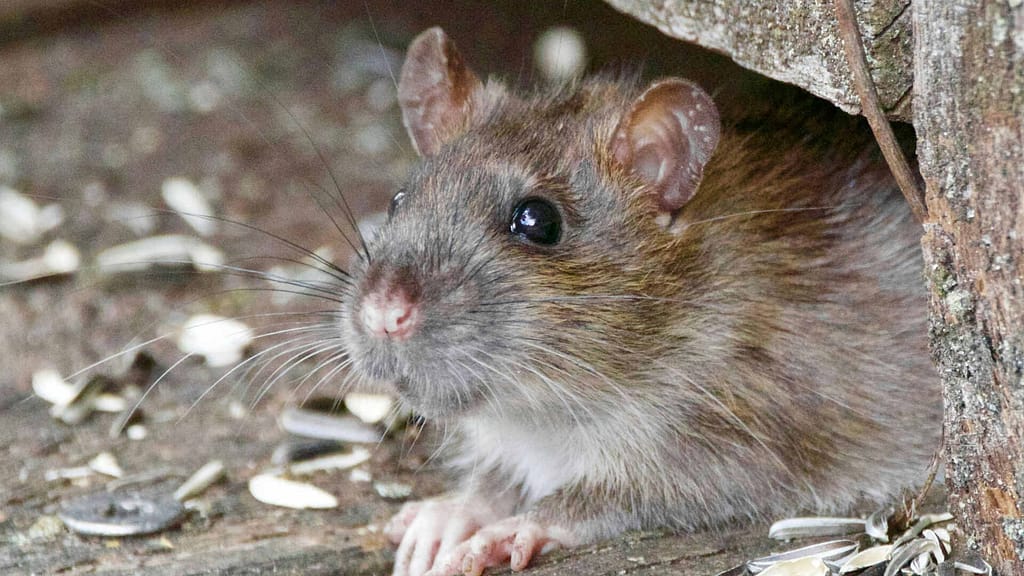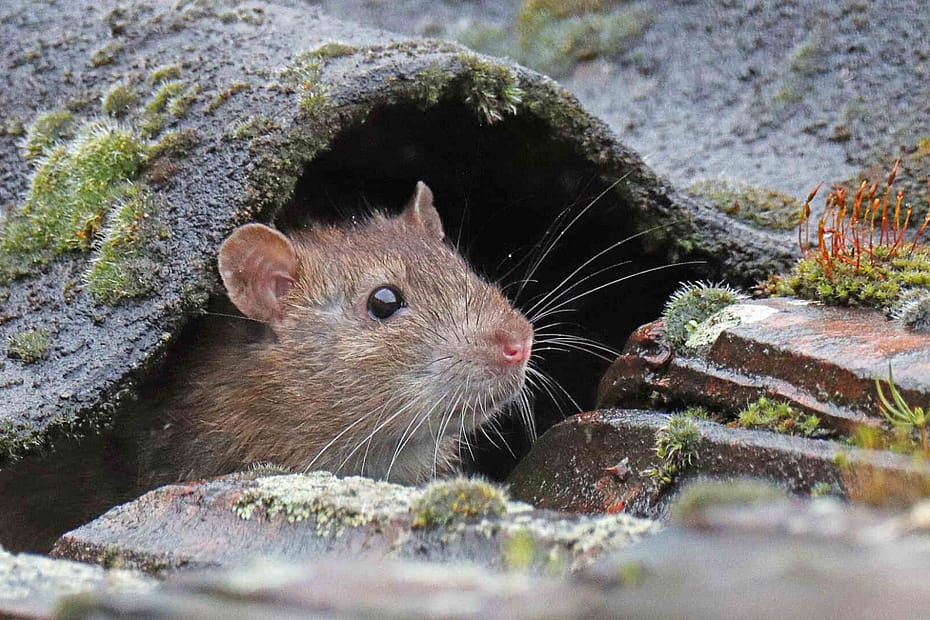Yes, roof rats pose a danger to your home, bringing diseases and causing damage to property. Discover ways to identify, manage, and eliminate these pests to keep your home safe and healthy.
Table of contents
Understanding Roof Rats
Roof rats are a type of rat that many people have problems with, especially in their homes. Let’s learn more about them, how to spot them, and why they like to live in certain places.
Characteristics of Roof Rats
Roof rats are smaller and slimmer than some other rats. They can be as long as a ruler, tail included. They have dark fur and are very good at climbing. These rats like warm places and are often found in areas with lots of trees and plants. When they come into houses, they usually go straight for the upper parts like attics or roofs. This is where they feel safe to live and hide their food.
Why Roof Rats Prefer Roofs and Attics

Roof rats love to climb. This is why they choose to live up high in places like roofs and attics. These spots keep them safe from animals that might want to catch them and away from humans. High places also let them look around for food and danger easily.
How They Differ from Other Types of Rodents
Roof rats are a bit picky about their food. While many rodents will eat almost anything they can find, roof rats prefer a diet of fruits, nuts, and seeds. This special diet is similar to what they would eat in the wild, up in the trees. So, if you find your fruit bowl raided or nuts missing, it might be a sign of roof rats.
Roof rats are more secretive and less likely to be seen during the day compared to other rodents that might scurry around openly. They prefer to stay out of sight, which makes them harder to spot. This secretive nature, combined with their preference for high places, means that they can be living just overhead without ever making themselves known.
The Dangers of Roof Rats

Roof rats aren’t just a nuisance, they can cause real problems for humans and our homes. Here’s why they can be dangerous.
Health Risks
Roof rats can carry diseases that make people and pets sick. When they move around our homes, they leave behind droppings, urine, and saliva, which can contain germs. People can get sick from these germs if they touch something contaminated and then touch their mouth or food.
Roof rats can spread diseases such as:
- Salmonella: Causes food poisoning.
- Leptospirosis: Can lead to kidney and liver problems.
- Bubonic Plague: Very rare today, but historically significant.
- Hantavirus: A respiratory disease transmitted through contact with rodent urine, droppings, or saliva.
- Rat-bite Fever: Can occur after being bitten by a rat or coming into contact with a dead rat.
- Typhus: Spread by fleas that have fed on infected rats.
- Lymphocytic Choriomeningitis (LCM): A viral infectious disease that can cause neurological problems.
- Tularemia: Also known as rabbit fever, can be transmitted by handling sick or dead animals infected by roof rats.
Mental Health
In addition to physical health risks… Mental health can become an issue if your house is infested with roof rats. They’re typically active at night which can interfere with your sleep. From the experience of having roof rats myself, I can tell you it’s an awful experience. Random noises in the evening such as chewing, clanking, banging, jumping and even playing noises will drive you crazy.
Smells
Roof rats may start off as seemingly harmless. Over time your attic will start to smell very bad. It takes some time for the smells to build up. But once you start to notice the smell it’s too late. Cleaning the fecal matter created by roof rats is a time-consuming process and is a large health risk.
Property Damage
Roof rats love to chew, and this can lead to serious damage to our homes. They can gnaw on wood, pipes, and even electrical wires. This chewing not only damages the structure of buildings but can also cause dangerous situations like roof leaks and electrical fires.
When roof rats nest in homes, they can tear up insulation, paper, and fabric to make their nests. This damage can lead to costly roof replacement or repairs. If roof rats are left unchecked, the cost to fix the damage can be very high, especially if they cause a fire or water damage. Plus, the presence of roof rats can lower the value of a home because no one wants to move into a place with a rat problem.
Check out this YouTube video discussing how a roof rat invasion in Central Phoenix, Arizona, led to property damage.
Identifying a Roof Rat Infestation

If you suspect roof rats are around, there are several signs to watch for in your home. First, keep an eye out for their droppings, which are small, dark, and shaped like spindles. You might find these in your attic, along the edges of cabinets, or on top of wall beams. Roof rats also leave small bite marks on things like food packaging, wood, or wires because they constantly need to chew to keep their teeth sharp.
Another clue is finding shredded paper, fabric, or plant materials hidden away, especially in high places like attics, which indicates they’re making nests. At night, you might hear scratching or scurrying noises from your ceiling or walls since roof rats are most active in the dark.
Managing and Preventing Roof Rat Problems
Dealing with roof rats doesn’t have to be a headache if you know what steps to take. Here are some easy tips to keep these pesky rodents away from your home:
- Seal Entry Points: Roof rats can squeeze through small holes to get inside. Check your home for any gaps or cracks in walls, around windows, and especially in the roof or attic area. Use steel wool, wire mesh, or caulk to seal these spots.
- Trim Trees and Bushes: These rats are great climbers and can jump from branches to your roof. Keep trees and bushes trimmed back from your house to make it harder for them to get on your roof.
- Clean Up Food Sources: Roof rats come looking for food. Make sure you don’t leave food out. Secure your garbage cans with tight-fitting lids and pick up any fallen fruit or nuts in your yard.
- Remove Water Sources: Like all animals, roof rats need water to survive. Fix any leaks and avoid leaving out water for pets overnight.
- Use Rodent Guards: On pipes or other structures that lead to your house, consider installing rodent guards. These devices block rats from climbing up to your roof.
- Keep Attics and Garages Clean: Clutter gives roof rats places to hide. Keep these areas neat and free of debris to make them less appealing to rats.
- Consider a Professional: Sometimes, the best option is to get help from a pest control professional. They can offer solutions tailored to your specific situation.
By following these steps, you can make your home less inviting to roof rats. Prevention is key, so take these actions now to avoid problems in the future. Remember, managing and preventing roof rat issues not only protects your property but also keeps your family safe from the health risks these rodents can pose.
Conclusion
To wrap this up, roof rats are more than just a small problem. They can make you sick and hurt your home. By learning how to spot them and keeping them away, you can keep your house safe and healthy. It’s really important to start fixing any rat problems as soon as you see them.
You can keep roof rats away by closing any small holes where they might get in, cleaning up any food they could eat, and not letting water collect anywhere. If you try these things and still see rats, you might need to call someone who knows how to get rid of them safely. Taking care of roof rats right away means your home will be a better place to live.
Fact checked by Adrian Catolico – 03/26/2024
